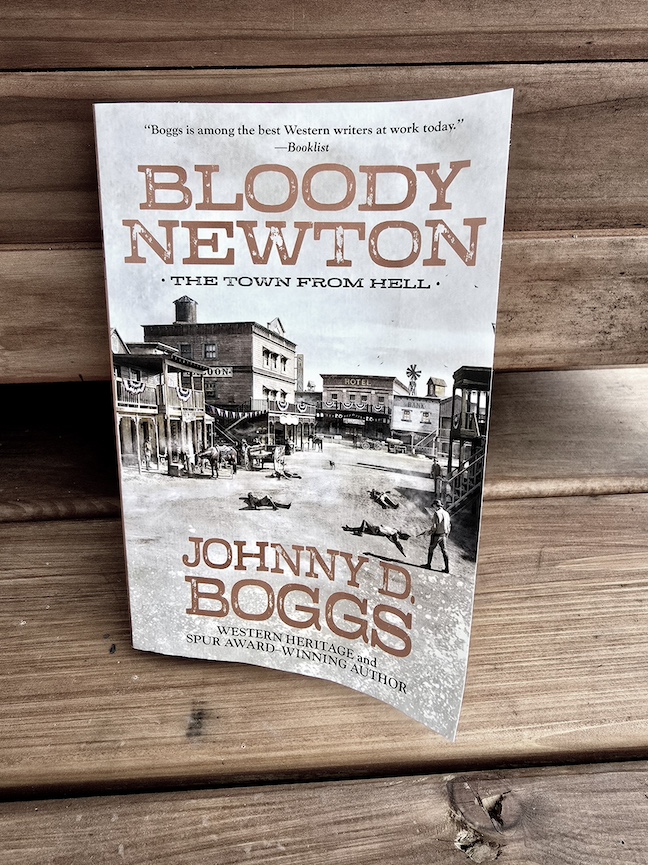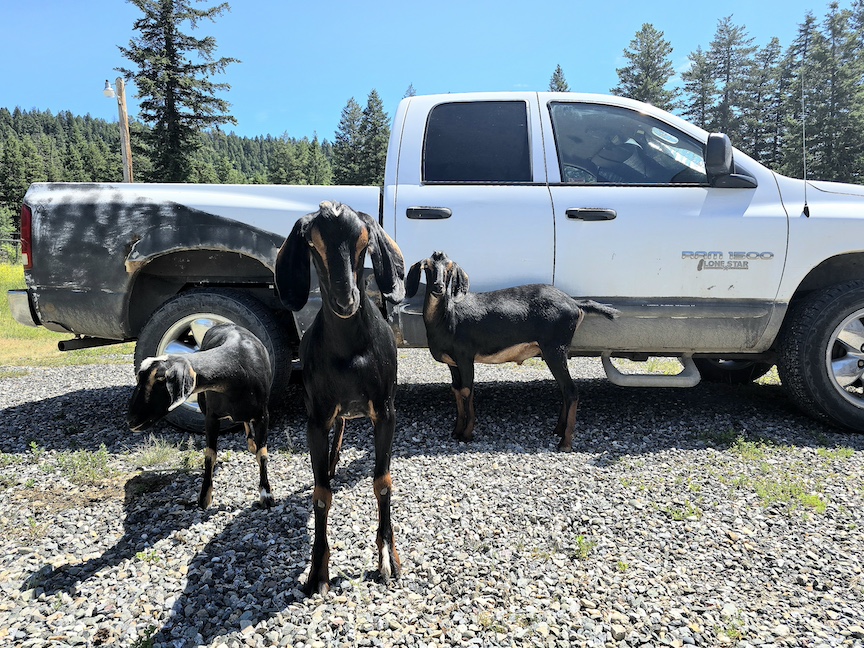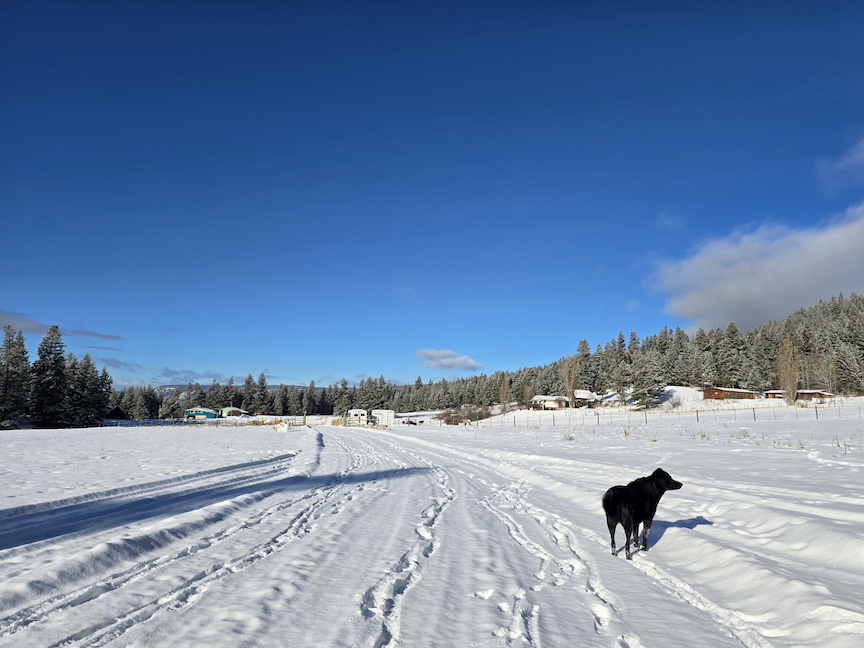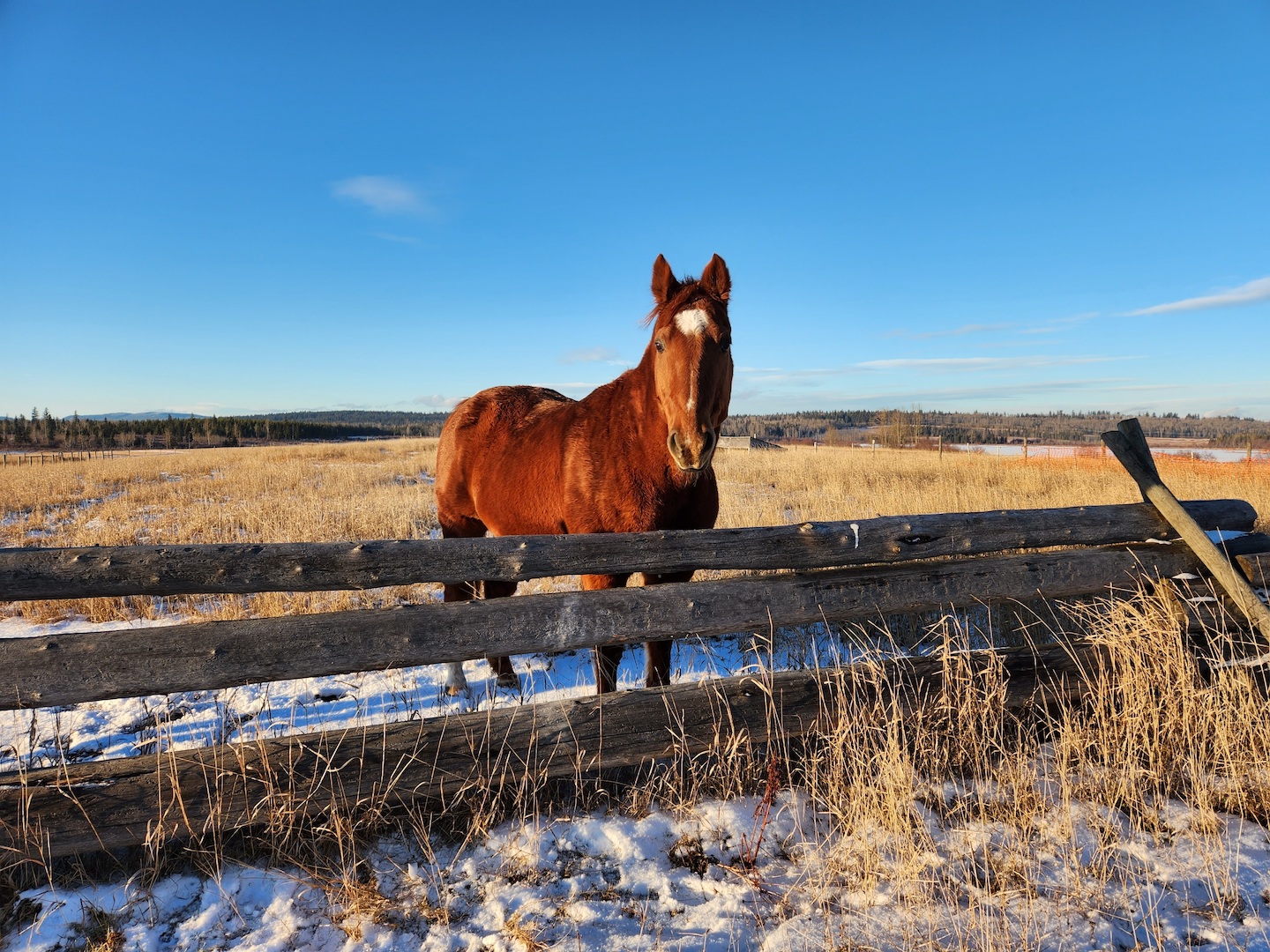Author: Johnny D. Boggs
Published: 2024
Mood: If you’re going on a trip and want a decent Western paperback that you won’t mind leaving behind to lighten your bag on the way home.
The blurb on the back of Bloody Newton: The Town From Hell proclaims, “A decade before the legendary Gunfight at [the] OK Corral, there was a much bloodier showdown with a much bigger body count – and Wichita Herald reporter Cindy Bagwell was there to see it all… This is the story of the deadliest gunfight in the American West.”
That got me excited. That’s why I bought the book. But most of this isn’t true.
- Only two more were killed in the Newton Massacre than at the OK Corral (five vs. three), so a “much bigger” body count is exaggeration
- The person who wrote the synopsis clearly didn’t actually read the novel or do fact-checking; Wikipedia says the total body count was thirteen, but all other historic sources AND this book state it as five
- There were also multiple gunfights that left six or more people dead and thus were technically deadlier, which I’m surprised this person didn’t know since they love Wikipedia so much, and Wikipedia has a great list of Old West gunfights
- Fictitious character Cindy Bagwell isn’t “there to see it all” either; she’s working from her shared room, and gets shot in the arm by a bullet that penetrates the wall
But then again, there’s also a newspaper review on the back of the book that says the story, set in 1871, “rings true more than two centuries” later. I’m no mathematician, but that sure doesn’t sound right.
I know that’s a lot of irritation pointed at just the back of the book, but it’s lazy and misleading.
Bloody Newton definitely isn’t the worst fictional retelling of a famous Western event that I’ve ever read. But as much as I wanted to, because the concept has huge potential, I couldn’t get fully into this story.

Bloody Newton: The Town from Hell weaves three stories of characters destined to wind up in Newton, Kansas, just in time for the Gunfight at Hide Park, aka the Newton Massacre.
Gary Hardee is a trail boss hired to take a herd from Southeast Texas to Abilene, Kansas. His two teenage sons are with him. The employer is a friend from Gary’s army days whose arrogant son, Hugh Anderson, is in charge of a third of the herd.
Denise Beeber is a talented cook headed for Newton, hoping to start a new life after her brother runs afoul of the law for the last time, and winds up dead. Her strategy is that the Santa Fe Railroad is headed to Newton, and railroad stops mean hungry customers.
Cindy Bagwell is an aspiring reporter from Alabama, hired to work at a paper in Arkansas. But when she arrives, the owner has been killed and there’s no more job. Undaunted, she gets work at another local paper, which eventually sends her out to report on the up-and-coming town that’s everyone’s talking about – Newton.
Gary has tons of trouble on the trail, including stampedes, lightning storms, and clashes with Hugh. Denise has her work cut out for her, setting up business in a town that’s just tents and lawless locals. Cindy has to find stories exciting enough for her editor to print.
![]()
None of Bloody Newton: The Town From Hell’s three main characters is a real person involved in the historic gunfight. The people who do the actual shooting and dying are either minor characters (two of them) or hastily introduced as the shooting starts (everyone else).
This is a bold choice. I get that the shooters were all basically randoms, not famous lawmen or gunfighters like at the OK Corral. So maybe author Boggs opted not to give them any backstory to convey a kind of “oh shit, what just happened? Who even are these people?” energy. It didn’t work for me, though.
I’d have preferred if just one of the fictional characters had the narrative, so we could get more into that person, or if someone in the actual fight was subbed in as a lead. Swapping in Hugh Anderson for Gary would change my enjoyment of this book entirely – it could still end with the same twists Boggs added, which I liked, but also give us thrilling glimpses of Hugh’s escape
That would have been a much more entertaining ending than chapters full of Gary healing, moaning and complaining while taking up the only bedroom in the apartment of two young women who have to sleep in a closet. And it never once mentions him paying rent, despite his fat cattle drive commission. Rude.
![]()
Here’s a list of all my other beeves with Bloody Newton, pun intended.
- McLuskie is only introduced in the last quarter of the book, initially pitted against someone who is also only just introduced, so you’re not super invested in him as a bad guy
- There are a LOT of minor and background characters to keep track of, especially when everyone is in Newton
- Only two of the people in the gunfight are introduced prior to the action, so Boggs has to rapidly introduce, describe, and then manoeuvre a bunch of people whose names you don’t know and for me, it resulted in WAY too much flipping back and forth between the pages – I’m still not even sure what side everyone was on
- The last quarter of the book feels off – it rushes through multiple brief scenes, sometimes jumping several weeks or months ahead, and several of the characters are written differently or do things that feel out-of-character
- Cindy goes from a strong-willed journalist to a kind of whiny, whimpering woman who publishes a lie at the risk of her career, to save someone she doesn’t know, and has a weird forced kiss with Gary
- There are a lot of typos in this book, way more than there should be for fiction by an award-winning author
And lastly, there’s the gunfight. I’m totally fine with the showdown only taking one chapter, because gunfights were short. But even the bloodiest part of Bloody Newton is diluted by putting Gary’s boys front-and-centre.
Evan barely gets any story at all prior to the fight, other than being portrayed as more sensitive than the other men. So the ways he acts right before and after the gunfight makes NO sense for the character, and read awkwardly.
Taylor has a little more backstory, surviving a couple of incidents on the trail to Newton. He gets the nickname Jim Riley because he has the ‘luck of the Irish’, which is a stretch but it works to tie things together later. What DOESN’T work is that he’s suddenly a badass gunfighter, with no prior reference to using a pistol.
![]()
I do want to say what I liked about Bloody Newton: The Town from Hell. Oh yeah, this is a THREE-bullet-list review.
- Showcasing a big gunfight that’s not already overdone in books and movies is a great idea; I learned a lot while researching the gunfight after finishing the book (check out this article, and this one about the mysterious newspaper correspondent ‘Allegro’, which is Cindy’s pseudonym in the book)
- The female characters are independent, driven, and aren’t just in the story to find a man (except when Cindy does her bizarre 180 at the end)
- The use of excerpts from real newspaper articles about Newton at the start of each chapter is really cool
- Boggs’s spins on both Allegro and the mysterious Jim Riley, who reputedly did the majority of the killing then walked off into the sunset and was never seen again, give this story a unique perspective
There are some great descriptions of what it’s like to be on the trail with cattle. The pacing is quite good, other than that weird last few chapters. And again, I really like the concept. I just wouldn’t recommend this book to a friend, or talk about it over beers.


